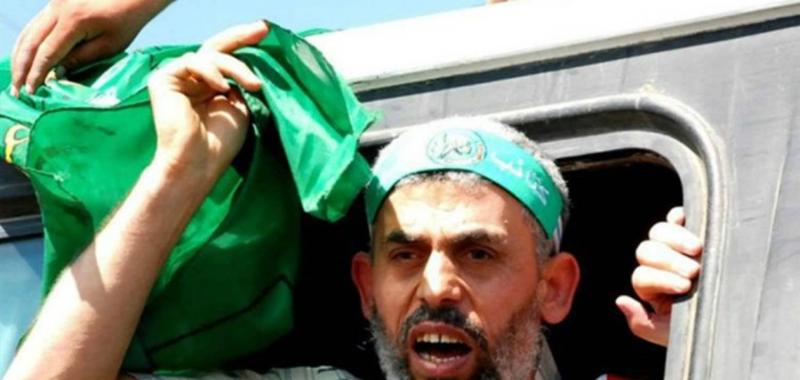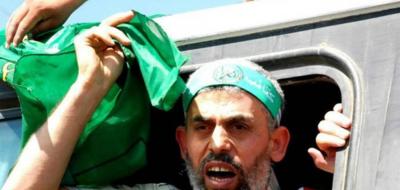It was in 2012 when the commander of the "Quds Force," Qassem Soleimani, received a Hamas official named Yahya Sinwar in Tehran. Observers say that a chemistry quickly developed between the Iranian general and the Palestinian visitor with an "Islamist" and security background. They add that the meeting concluded with each man feeling he could rely on the other. Iranian support was not surprising; in 2006, Hamas leader Mahmoud al-Zahar returned from a meeting with Soleimani with financial support amounting to $22 million to pay salaries in Gaza, which had chosen to separate from the Palestinian Authority. However, the cooperation between Soleimani and Sinwar would evolve into a significant program, especially after the latter assumed the leadership of the movement in the sector, with whispers circulating about a project for a "major blow" that would cripple Israel through a torrent of missiles and drones arriving from various maps. Sinwar had emerged from Israeli prisons in 2011 after more than two decades of incarceration, which he utilized to master the Hebrew language and understand "the strengths and weaknesses of the occupation," a focus that also caught Soleimani's attention. Soleimani was generous with Sinwar, providing not only weapons but also the capability to manufacture them. Thus, the current scene in Gaza bears the hallmarks of that meeting. Before Hamas, especially under Sinwar's leadership, took the path of alliance with Iran, the "Islamic Jihad Movement" led by Fathi Shiqaqi had chosen this path early on and remains there.
The current scene in Gaza carries the effects of a handful of tumultuous decades in the Arab-Israeli conflict, particularly in its core area — the Palestinian front. U.S. President Joe Biden's announcement of the Israeli plan to halt the Gaza war and America's willingness to play a guarantor role for its implementation in cooperation with Egypt and Qatar highlights U.S. involvement in curbing confrontations and striving to resolve them. The awaited final response from Hamas to the plan serves as a reminder that the Palestinian-Israeli conflict has also borne Iranian imprints in recent decades.
The American shadow is heavily present in the Middle East. When Egyptian forces crossed the Bar Lev Line in 1973, Israel considered it faced an existential threat. America intervened and helped adjust the balance of power on the ground to make negotiation the only option for exiting the stalemate. Thus, Henry Kissinger successfully negotiated disengagement agreements on both the Egyptian and Syrian fronts. The U.S. red line was primary among the reasons that drove Anwar Sadat to take the unprecedented dramatic step of visiting the Israeli Knesset in 1977 in search of peace.
After five decades, forces led by Yahya Sinwar crossed the electronic barrier, leading Israel to once again perceive an existential threat. The U.S. sent its fleets to prevent the conflict from escalating and controlled the exchange of strikes between Israel and Iran, opposing Israel’s complete invasion of Rafah. It left the warring parties with no choice but to seek a way out through negotiation.
It is no exaggeration to state that 1979 was one of the most significant and dangerous years in the history of the Middle East and the Palestinian file as well. In that year, the Khomeini revolution succeeded in toppling the Shah's regime. The revolution presented the world with an unprecedented scene: the transformation of American personnel working in their embassy in Tehran into hostages. The goal was to undermine the image of the "Great Satan" and to attempt to expel it from the region, or at least threaten the ties that connect it to countries in the area. The revolution also manifested in the removal of the Israeli flag from atop the Israeli embassy building in Tehran, replaced by the Palestinian flag. Iran benefited from the fact that the same year saw the signing of the Egyptian-Israeli peace treaty and Egypt’s practical exit from the military aspect of the conflict with Israel, transitioning into an alliance with the United States.
There is not enough space here to enumerate all the imprints. American support for Yasser Arafat's exit from Beirut, then embracing the Oslo Accords, and its current insistence on a role for Palestinian legitimacy are notable. In contrast, Iranian imprints have been considerable in undermining the Oslo Accords, militarizing the second Palestinian intifada, supporting Hamas's rule in Gaza, and providing the essentials for the "deluge" in collaboration with Sinwar.
The "Al-Aqsa deluge" dealt an unprecedented blow to Israel. Netanyahu's government responded by inflicting an unprecedented catastrophe on the residents of Gaza. Neither Sinwar’s blow was fatal nor Netanyahu's response was of that fabric. Amid the bloody scenes, Arab and Saudi efforts succeeded in placing the two-state solution on the agenda of both nearby and distant governments.
Biden's proposal placed the conflicting parties in front of a difficult option with no alternative. Netanyahu cannot ignore the crucial U.S. role in saving the Israeli state from the days of the "Bar Lev Line" to the day of the "deluge." He cannot overlook the rising international isolation. On the other hand, Sinwar cannot ignore the features of the new catastrophe in the sector, nor can he forget Iran's role in providing the conditions for the "deluge" and its involvement in launching support wars from Lebanon and Houthi sites and other locations. Can Netanyahu return from the war amid widespread international support for the Palestinian state? Can Sinwar release hostages in an agreement that will take Gaza out of the military confrontation with Israel? Does Hamas dream of later extending its influence from the West Bank after it has become clear that the dream of extending from Jordan is out of reach?




